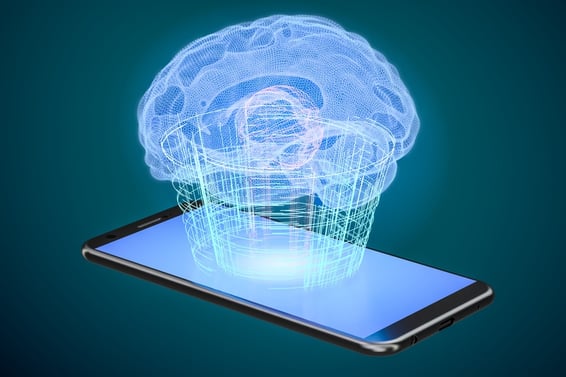
“Machine learning and AI have the power to transform our lives and to empower every person and organization around the world. It’s crucial that as these technologies develop they are designed to include people with disabilities”
~ Jenny Lay-Flurrie, Chief Accessibility Officer, Microsoft
------------------------------------
The potential for artificial intelligence (AI) seems so amazing – I mean, robots I can talk to and ask to activate functions in my home? Yes please!
Yet while I consider myself pretty hip to current technology, I do have to admit that I’m of the generation who thought ‘The Clapper’ was amazing, so while the whole concept of artificial intelligence is very cool, it is somewhat daunting to grasp at times. (For a laugh, here’s a trip down that memory lane from the eighties).
Even if we don’t dig quite as far back as 1989, it is clear that technology has come a long way in a short period of time, and it is growing at an even faster rate with machine learning.
Machine learning is defined as “an application of artificial intelligence that provides systems the ability to automatically learn and improve from experience without being explicitly programmed. Machine learning focuses on the development of computer programs that can access data and use it learn for themselves”.
Computers using data to learn from themselves. Think about that.
With such great capabilities comes great responsibilities, and I can’t hide the fact that it has me wondering if we are getting it right. While I am definitely not a naysayer to technology (you may remember my blog about how caregiving can be enhanced by technology), and I do research quite a bit in this area of interest, some of the things I read and hear about in the space of artificial intelligence do give me pause – even if I’m a little excited about them.
It is precisely because artificial intelligence needs data to learn about the world that I have questions, and I think that’s a good thing to wonder about.
Is everyone being included in the data needed to have AI grow?
Is AI inclusive?
As I said, the machine learning that is taking place needs data to learn in the first place. Deep learning is “a subset of machine learning in artificial intelligence that has networks which are capable of learning unsupervised from data that is unstructured or unlabeled”.
Stay with me here, this is heady stuff. If artificial intelligence is supposed to help us, and represent us – all of us – it needs to have good data by which to learn from. I know from researching topics on a wide range of disabilities that current, good data is hard to mine. Not that it is impossible, especially when processed by machines much more powerful and quick than me, but it most certainly needs to be done in order for AI to be inclusive.
And therein lies a problem.
Described very well on CBC’s technology show ‘Spark’, the issue with inclusion is this: “Traditionally, computing relied on humans writing rules that a computer would then have to follow. In machine learning, the computer looks at data and creates patterns to help it understand the world. It predicts how things will act in the future, and then makes decisions based on those predictions.
It's this data that fuels machine learning. But in its raw form, the big data sets used to train AI are bound to contain information that isn't relevant or that is confusing. So it needs to be refined. The data is "cleaned" by removing outliers or data that disrupts a greater pattern”.
Unfortunately the ‘outlier’ data isn’t always irrelevant; it can represent the experience of real world people.
Thankfully, there are researchers and data scientists out there working to create better systems for inclusion and representation. People like Jutta Treviranus, the director of the Inclusive Design Research Centre in Ontario, who recognize that our collective research and data is not very supportive of diversity. She sees that the lack of good and plentiful data out there is being transferred now to our machine learning, and she’s aiming to change that.
"We need transparent systems in order to serve individuals or to create systems that work for people with disabilities or that work for diversity”.
To that end, she focusses on improving artificial intelligence systems so they can better serve everyone, including people with disabilities, and organizes hackathons towards this goal.
Luckily Jutta is not the only person working towards inclusion. You don’t need artificial intelligence to see that that is a good thing.
———
Find out more about:
Upcoming Design Challenge Hackathon Events
